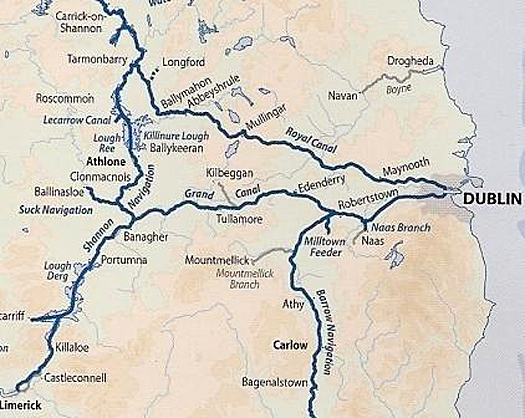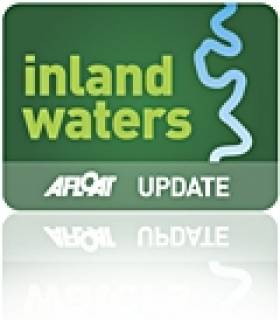Displaying items by tag: Nick Theato
Lough Derg RNLI Treasurer Hands Over Reins
#RNLI - Lough Derg RNLI in Tipperary had a celebration for Nick Theato earlier this month as he handed over the role of treasurer to Caleb Clarke.
On Thursday 14 April, Theato brought his wife Mary and three of his five children - Barry (home from Australia), Anne and Paul (home from the UK) - down to the station to meet crew and members of the operations and fundraising committees.
Nick Theato, who has served as honorary treasurer for the Nenagh RNLI Fundraising Branch for the past 15 years and for the Lough Derg RNLI since it came on service 10 years ago, is handing over treasurer duties to the capable care of Caleb Clarke, but is remaining on the fundraising committee.
Lough Derg RNLI lifeboat operations manager Pat Garland introduced everyone and Niamh McCutcheon, chair of the Nenagh RNLI Fundraising Branch, presented Theato with a certificate of thanks on behalf of the RNLI. Previously in 2010 he received a silver medal for voluntary service to the RNLI.
Theato’s good friend Pat Kelly - fellow sailor, lifeboat administrative officer for Lough Derg RNLI and secretary to the Nenagh Fundraising Committee - said that "after Mary and his children, Nick’s great love is his boat Bo-Bo".
On behalf of Lough Derg RNLI, Kelly presented Theato with a picture of Bo-Bo by artist Clare Hartigan. Nick Theato served in the Royal Navy for many years, and following his retirement back to Ireland, sailed on Lough Derg for many more.
He shared a story of his early years in the navy and of an incident at the outset of his career, which secured his respect for the water ever since. He spoke of his love of Lough Derg and its beauty, but added that he was "well aware of its dangers, even for a lifeboat".
Sailors Plan Month Long Journey from Shannon to Liffey and Back
Nenagh resident and inland waterways enthusiast, Nick Theato, single-handed aboard 'Bo-Bo, a five metre Pedro trailer/sailer and Pat Kelly, Killadangan, with his son Andrew in 'Shu-Ra-Nu', a 6 metre Etap 20 trailer/sailer, plan to raise funds for Lifeboats Ireland by undertaking the IWAI Green & Silver Challenge in June, 2011. Their fundraising target is €5,000.00.
On the 25th June, 1946, Tom and Angela Rolt left Athlone aboard 'Le Coq', a 28ft.x8ft. converted ship's lifeboat on a voyage that would inspire contemporary and successive generations of inland waterways enthusiasts.
Tom Rolt wonderfully documented the voyage in his book 'Green & Silver', published in 1949, which has since become a classic. This work was instrumental in inspiring the small group who founded the Inland Waterways Association of Ireland in 1954, whose objective was to save the Shannon navigation from strangulation by low bridges. Indeed, the colour scheme of the IWAI's logo and burgee derive from the cover design of Rolt's book.
With the re-opening of the Royal Canal in October 2010, it is now possible to retrace Rolt's journey in full and complete the circular route formed by the Royal Canal, River Liffey, Grand Canal, River Shannon and Camlin River.
To celebrate this event, the IWAI has initiated the 'Green & Silver Challenge' in an effort to encourage people to make the circular journey. Nenagh resident, Nick Theato single-handed aboard 'Bo-Bo, a 16 foot Pedro trailer/sailer and Pat Kelly, Killadangan, with his son Andrew aboard 'Shu-Ra-Nu', a 20 foot Etap trailer/sailer, plan to raise funds for Lifeboats Ireland by travelling the full Green & Silver Route throughout June 2011.
Departing on June 1st, they will travel from Dromineer through Lough Derg and Lough Ree and enter the Royal Canal at Richmond Harbour. They plan to cross the Liffey in Dublin 17 days later, where they will take a welcome day off before commencing the return journey via the Grand Canal to Shannon Harbour. The journey will take approximately 28 days, will cover a minimum of 333 km. and navigate through 92 locks (some double), 91 of which are manual. Their fundraising target is €5,000

Nick Theato is Treasurer of the Lough Derg RNLI Fundraising Branch and Lough Derg Lifeboat Station at Dromineer.
Pat Kelly is Secretary of the Lough Derg RNLI Fundraising Branch.
Nick and Pat welcome all sponsorship, however modest. Contributions can be pledged online at http://www.mycharity.ie/event/green_silver_event/. Nick may be contacted on 086 1738014 ([email protected]). Pat is at 087 6908099 ([email protected]).
For further details / interviews / photos: Contact Pat Kelly at 087 6908099 ([email protected]). Support photography: Gerardine Wisdom 087 6522582 ([email protected]).































































